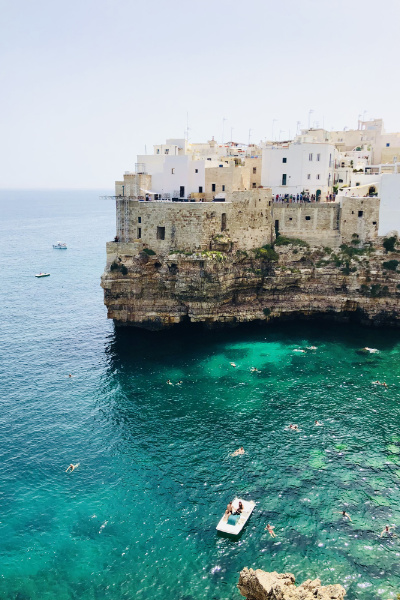It’s not difficult to see why Italy welcomed a record number of tourists in 2023. A diverse country brimming with culture, natural beauty and mouth-watering cuisine… what’s not to love? At a time when its popularity has never been greater, the need for sustainable tourism in Italy is essential. Some positive initiatives are already underway, such as encouraging tourists to visit lesser-known regions, implementing fines for lingering selfie-takers in Portofino, and banning tourists’ cars on the island of Procida. But there is always more that can be done. Keen to play your part? Here are some of the best ways to practice sustainable tourism in Italy…
1. Undertourism in Italy
2. Philantourism in Italy
3. Community-based tourism in Italy
4. Flight-free travel in Italy
1.
Undertourism in Italy
Italy may not be the first country to spring to mind when you think of undertourism, but the land of la dolce vita still has plenty to offer the conscious traveller. While we’re not suggesting you forego Italia’s famous (and must-see) sights, consider skipping tourist hotspots such as Venice, Rome and Florence, for a road less travelled. In Italy, you’ll find that for every swarming beauty spot, there is a quieter neighbour with an even better view, minus the crowds. Take idyllic Ischia, an island which is more popular among locals than tourists yet offers glittering vistas to rival Capri’s. Or, in northern Italy, visit the smallest of Lombardy’s major lakes, Iseo, which enjoys relative tranquillity compared to giants Como and Garda.

2.
Philantourism in Italy
The concept of Philantourism is all about choosing a holiday destination which has the most to gain from the economic benefits of tourism. While we know that Italy isn’t short of visitors, this doesn’t mean that tourist spending goes back into the country evenly. Consider Venice, where an estimated 38 million tourists are expected to flock by 2025. With such a concentration on this tiny island city, the surrounding regions barely get a look in. Sustainable tourism in Italy involves making the shift from heaving hotspots populated with chain hotels and tourist traps, to supporting the local economy. Becoming a Philantourist in Italy means making an effort to stay in locally-owned independent hotels, buy locally-made wares from small businesses, and dine in local restaurants. Return from your Italian adventure with handcrafted glassware from Tuscany, traditional papier-mâché from Lecce, or artisan pasta from, well, anywhere.
3.
Community-based tourism in Italy
A key component of sustainable tourism in Italy, community-based travel is all about (yep, you guessed it) interacting with the community. Encouraging visitors to engage with traditional ways of life and stay in community-owned accommodation, this branch of responsible tourism helps to preserve regional cultures and rural landscapes. As founders of the Slow Food movement, Italians are big proponents of the farm-to-fork experience and are passionate preservers of local culinary traditions. Learn how to cook like an Italian in a community cookery school in the Emilia-Romagna countryside, or sample culinary creations from family-run businesses on a foodie tour around Bologna. And if you fancy a break from all the pasta? Put your dexterity to the test in a traditional weaving workshop, using ancient cloth-making techniques while staying in the Apennines. No matter how you choose to practice community-based tourism, immerse yourself in all things local and you can’t go wrong.

Image by Lucy Laucht
4.
Flight-free travel in Italy
Flight-free travel is a hot topic right now and opting out of aeroplanes is a guaranteed way to practice sustainable tourism in Italy. The diverse northern regions of Turin, Milan and the Lakes can all be reached within a day’s train travel from the UK. Or, for those preferring to begin their journey by sea, you can ride the ferry ride across the English Channel. Once you’ve arrived, enjoy spectacular scenery as you glide through Italian towns and countryside from the comfort of a train carriage, or set your own pace on a road trip for the ages.
Written by Hannah Whitehall
